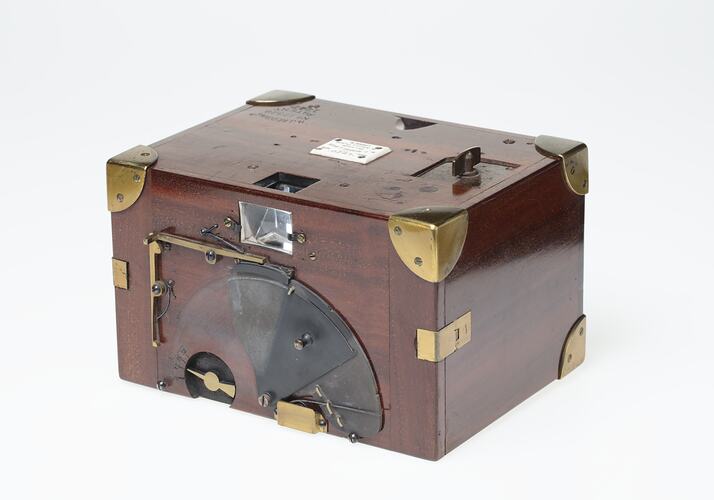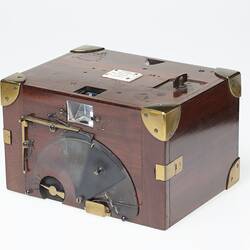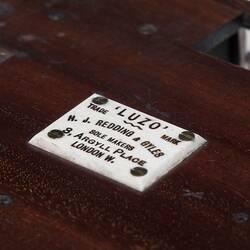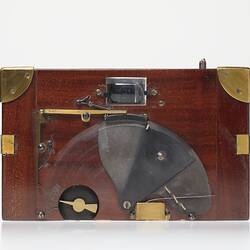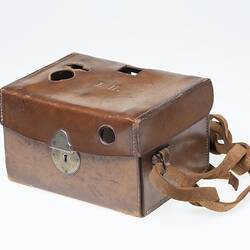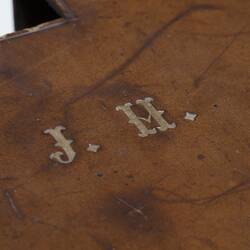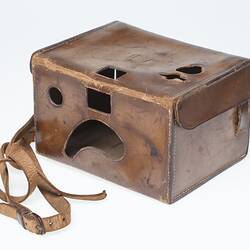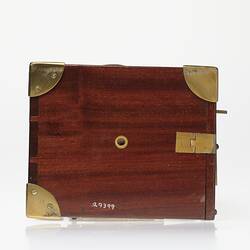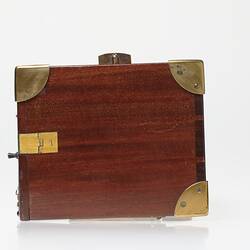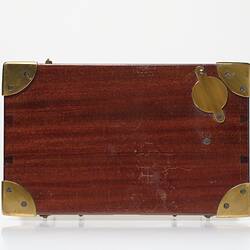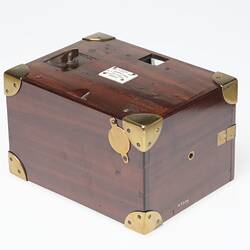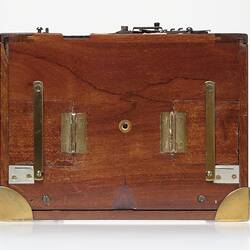Summary
Luzo Model 3 box camera, with serial number 1242, manufactured by H.J. Redding & Gyles, London, 1896 - 1900.
The Luzo was first patented as a roll film camera by Henry Joseph Redding using patent no.17328 in 1888.
The Luzo was the first English roll-film camera to be produced [1889], preceded only by the Kodak box roll-film cameras, introduced by Eastman Kodak, Rochester, U.S.A., one year before.
HJ Redding cameras were sold by J Robinson & Sons until 1896 when HJ Redding and ET Gyles established Redding & Gyles to make and sell their cameras.
Advertised as a hand camera and a detective camera, the Luzo was easy to carry and easy to use: it had a simple, single lens view-finder at the front with a mirror at the top which made it ideal for operating at waist level. The user looked down into the viewfinder mirror which gave an upside down image; the leather carrying case was designed as much for concealment as ease of transport; it could take 48, 3" x 4" exposures on 3 3/8" wide roll-film.
Compared to other roll-film cameras of the time, relatively few Luzo cameras were made and the high craftsmanship reflects that the company was catering to a specialised clientele. The camera casing was made of mahogany with brass fittings.
Physical Description
Rectangular box camera, made of polished mahogany with dovetail joints and brass fittings. Viewfinder in centre front with lens below behind metal cover. Small white (possibly bone) plate with inscription on top.
More Information
-
Collecting Areas
-
Acquisition Information
Donation from J. Sotheran, 18 Sep 1976
-
Manufacturer
H.J. Redding & Gyles, 3 Argyll Place, London West, United Kingdom, circa 1896
Information from this website below suggests that this particular model was made only from 1896 onwards. With its serial number of 1242 and less than 1400 cameras probably made, the latest date of manufacture is probably around 1900 but that is unclear. http://www.earlyphotography.co.uk/site/entry_C270.html -
Inscriptions
Plate: ''LUZO' / TRADE MARK / H.J. REDDING & GYLES / SOLE MAKERS / 8, ARGYLL PLACE / LONDON W. Top, engraved: 'H.J. REDDING / No. 17328 / PATENT 1242'
-
Model Name or Number
-
Brand Names
-
Classification
-
Category
-
Discipline
-
Type of item
-
Overall Dimensions
170 mm (Width), 135 mm (Depth), 110 mm (Height)
-
Keywords
Cameras, Lenses, Mahogany Family (Meliaceae), Photography, Photographic Equipment, Optics, Industrial Design, Manufactured Products
